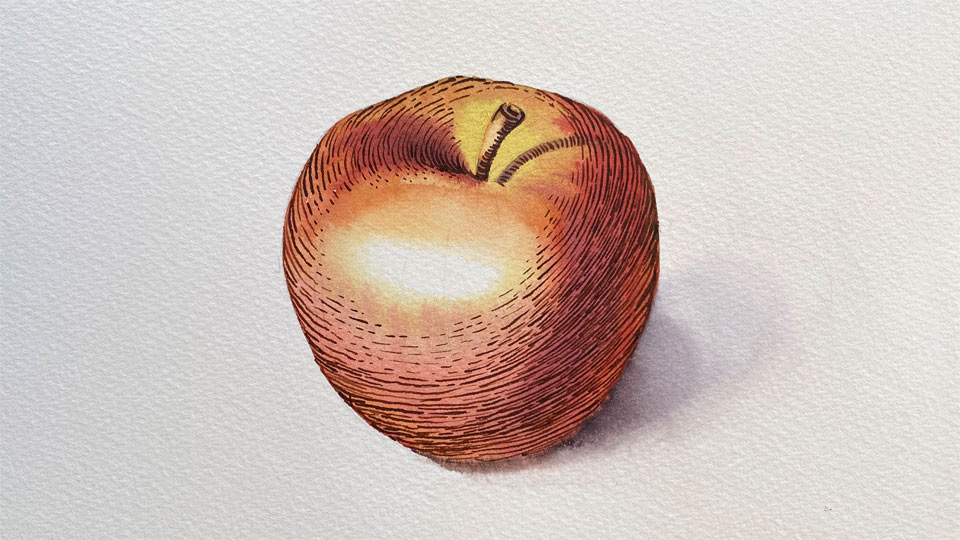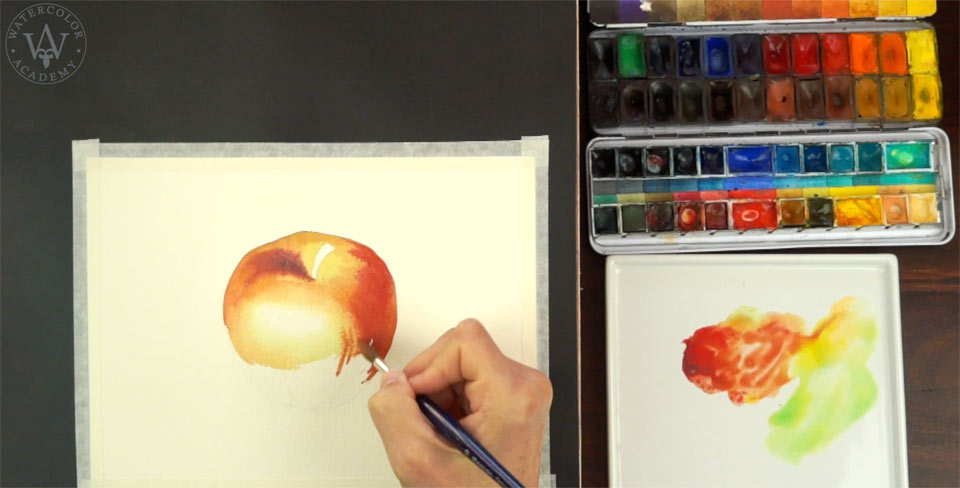A self-study, self-paced course where you can learn how to paint in watercolor by watching video lessons and doing assignments
$297 USD
ENROLL NOWA self-study, self-paced course where you can learn how to paint in watercolor by watching video lessons and doing assignments
$297 USD
ENROLL NOWOne-to-one, unlimited and custom-tailored to your skills and needs Personal Tutoring by the Watercolor Academy teachers
$997 USD
ENROLL NOWVideo lesson by Vladimir London
In this video lesson, you will discover how to paint in watercolor using the wash-and-outline technique.The technique that I am about to explain and demonstrate in this lesson is very similar to the pen and wash technique; however, the sequence is reversed. Instead of making a well-detailed drawing first and then applying washes of color on top, in the wash-and-outline technique, the artwork is first painted in watercolor, after which a drawing in bold lines is made on top of the dried paint layer.

Although it is perfectly possible to do a watercolor wash without any preliminary underdrawing, you may make a faint sketch in graphite pencil to put the composition design in place. For the purpose of the wash and outline watercolor painting technique, it does not matter what kind of wash you make. You can paint wet-on-dry or wet-into-wet, work in alla prima or make multiple glazing layers. The purpose of the first step is the same – to make a colorful underlayer for a drawing which will be made on top. For the purpose of this video lesson, I am painting 'alla prima wet-on-dry'. How to paint in alla prima is explained in previous video lessons, so I will not spend much time on this topic. Instead, let's talk about what makes this painting technique special, why it is important and how you can use it.
A good painting is well-drawn, but what if you are under time pressure or have another creative task, and would like to make very impressionistic free-flowing washes that would not necessarily produce a very precise drawing. This is where the wash-and-outline painting method becomes very handy.

It is split into two parts: painting with watercolor, and drawing. Each of these parts can solve a very specific task. When painting in watercolor, you can pay less attention to precise outlines, contours and small details, but instead concentrate on colors, their brightness, hue saturation, and how they look on the artwork. When the color step is complete, you can work on the drawing, correcting outlines and contours, defining small details and even amending tonal values, making them darker in the drawing medium of your choice.
When it comes to the drawing meduium, you will have a much wider range of options what to make a drawing with. You may go for some chalks or colored pencils, as well as charcoal, carbon sticks, pastels, or decide to use a medium that will give you sharper and more defined lines; for example, pen-and-ink, ball pens, CD markers, or anything you like that would make a nice drawing on top of the colored background. The choice of a drawing medium is completely up to you. There is no one strict rule here as to which drawing tool has to be used for the wash-and-outline technique. To give you an example, in will continue this artwork in pen and ink. I will use a dip pen with a metal nib, and brown sepia ink. This ink is not waterproofed, but it doesn't make any difference because the painting step is complete and there will be no more washing layers on top of these ink marks.
You can learn how to draw in pen-and-ink in multiple Drawing Academy video lessons. In this academy, you will discover different pen hatching techniques, the rules of drawing in ink, how to achieve good-looking rendering and how to make different styles of lines, including making linear and tonal drawings in ink proficiently.
Although an apple is a very simple object and may not require a drawing on top, there are many other cases where the 'wash-and-outline' technique will be fully appropriate. Later on, in this video course, you will find several video lessons where wash-and-outline is used.
Natalie Richy, the Old Masters Academy tutor, will demonstrate to you how to make beautiful portraits by washing backgrounds in watercolor and making drawings in colored pencil on top. Even if you have never painted a single portrait in watercolor before, you will find this technique incredibly simple and very picturesque, allowing you to make beautiful portrait artworks. Needless to say, the wash and outline technique works not only for portraits, but you can use it to depict whatever you see, think or imagine.
This video concludes the series of lessons on the watercolor painting techniques in which I depict the same apple in different ways. Keep in mind that it is not about how to paint an apple, but to demonstrate what different watercolor painting techniques can be used and how to do them. There are no good and bad techniques. They are simply different. Some techniques will work better for certain tasks. If you paint an apple or whatever object in some way, and don't like how it looks, it is not necessarily that you did a bad job, but it might be that you picked a less suitable technique. The choice of a technique should depend on your creative goal. You may want to do an artwork that looks more impressionistic or has a highly realistic texture with small details. So, you would have to choose a painting technique that is most suitable for making a picture that you have in mind.
In any case, I would advise you to test and practice every method and technique presented in the Watercolor Academy course. This will allow to make an educated choice of a technique to choose for each artwork or creative project which you plan on making. Using more than one technique will also be greatly beneficial for your skills and future artworks.
A self-study, self-paced course where you can learn how to paint in watercolor by watching video lessons and doing assignments
One-time payment - Lifetime membership
$297 USD
One-to-one, unlimited and custom-tailored to your skills and needs Personal Tutoring by the Watercolor Academy teachers
One-time payment - Lifetime membership
$997 USD